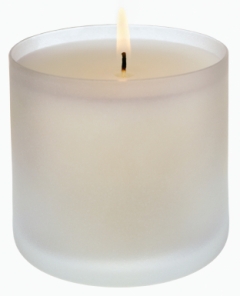Fundamentally, Judaism is a happy and optimistic faith, yet it recognises that there are times when sadness overtakes a person and a process of mourning must take place. Never more so than when we lose one of our close relatives: mother, father, brother, sister, spouse, son, or daughter. Those who have lost one of these listed relatives observes formal mourning for them; it is not not an obligation to observe formal mourning for anyone not on the list.
In Judaism the deceased is buried as soon as possible. This takes place following a short period of time, during which the Jewish burial society – known as the Chevra Kadisha (literally, ‘Holy Brotherhood’) – prepares the body for burial. Observant Jews of all branches of Judaism do not cremate, but cremation is increasingly popular with secular Jews (although preferring burial to cremation, Reform and Conservative Judaism do allow their rabbis to officiate at funerals where the deceased will be cremated; in contrast, Orthodox rabbis will not officiate at such funerals). At the funeral, each member of the immediate family, as listed in the first paragraph above, makes a short tear in one of their garments. This action, known as k’riah, symbolises the way the death has torn, or broken, their heart.
During the funeral, Kaddish is recited for the first time. Mourners say this prayer, a praise of God, for the next eleven months if it is their parent who has died. Many mourners make an extraordinary effort to go to synagogue regularly during this time since this prayer can only be said in the company of a minyan (ten Jewish men over the age of Bar Mitzvah in Orthodox Judaism; ten Jewish adults – over Bar or Bat Mitzvah age – in Reform and Conservative Judaism).
After the funeral, the mourners return home and share a meal of condolence together.
Jewish tradition divides mourning into three successive periods which structure the mourners’ lives and help them to gradually and gently return to the activities of life and work.
- Shiva (7): The first period is the seven-day Shiva period, when the mourners abstain from all work and sit together at home receiving visitors who provide company and consolation. Friends and neighbours provide meals and take care of day-to-day tasks for the mourners. During this intense week of mourning, bathing, shaving, haircuts, marital relations and the wearing of leather shoes are forbidden.
- Sh’loshim (30): Following shiva, up until the end of thirty days counting from the burial, the mourners may return to work, but they abstain from most forms of entertainment, such as concerts, parties and movies. Many continue to avoid having a haircut or even a shave during this time. When mourning a relative other than a parent, formal mourning ends at the end of the Shloshim period.
- Yud-Bet Chodesh (12 months): From the end of sheloshim until a year of mourning has passed, the children of the deceased avoid joyous activities, especially music and parties. This 12 month period is observed only for a parent who has died and not for other relatives.

Besides this first difficult year, Judaism impresses on us the need to remember and respect the memory of our departed relatives. We do this by lighting a candle on the anniversary of their death each year. This anniversary is known as the Yahrzeit. The candle burns at home for 24 hours and Kaddish is recited in synagogue on that day.
A further ceremony is known as Yizkor. This includes a prayer commencing with the word Yizkor (meaning “May God remember the soul of ……”) and is done in synagogue four times a year on major festivals. Custom requires all those with a parent who has died to attend Yizkor and doing so is seen as a way of showing honour to one’s parent (the 5th of the 10 Commandments) even though they have died.
Finally, we are instructed to cover the grave with a stone. We read that Jacob set up a marker over Rachel’s grave (Genesis 35:20). Jewish graves are marked with the name of the deceased. Rabban Gamaliel’s instructions for burial emphasised equality and simplicity and thus large, ornate stone markers are discouraged. His son, Rabbi Shimon ben Gamaliel is quoted in an early rabbinic work as saying, “We need not erect monuments for the righteous; their accomplishments are their memorials.” The gravestone (called a matzevah in Hebrew) is erected during the first year after the death, usually towards the end of the year, and a religious ceremony called a “consecration” is held at the graveside to dedicate the gravestone in the deceased’s memory and honour.
According to Jewish law, Cohanim, the priestly descendants of Aaron, must not come too close to a dead body for reasons of ritual purity. For this reason, Cohanim do not attend cemeteries or even funeral services except if it is their own close relative who has died (in which case they are obligated to do so). It also explains why the graves of Cohanim are placed at the edges of cemeteries – so that they can be accessed by their near relatives without them having to walk past (and be ritually defiled by) the graves of other people.
Videos:
Links:
Ahavat Israel: Jewish Mourning
Aish haTorah: Journey to the Next World
Aish haTorah: Comforting the Pained
Aish haTorah: May ‘the Place’ Comfort You
Aish haTorah: The Stages of Jewish Mourning
Aish haTorah: Cremation or Burial? A Jewish View
Being Jewish: The Shiva Call – Comforting the Mourner
Being Jewish: Life, the Afterlife, and the Soul
Forward Magazine: More Jews Opt for Cremation
Judaism 101: Life, Death and Mourning
Judaism 101: Olam Ha-Ba – the Afterlife
Jewish Agency: Mourning Customs
Jewish Agency: From Mourning to Remembrance
Jewish Virtual Library: Death & Mourning in Judaism
Jewish Virtual Library: Putting Stones on Jewish Graves
My Jewish Learning: Jewish Views on Cremation
Rabbi Yitz Wyne: Life After Death (video)
Shema Yisrael: International Jewish Burial Society


